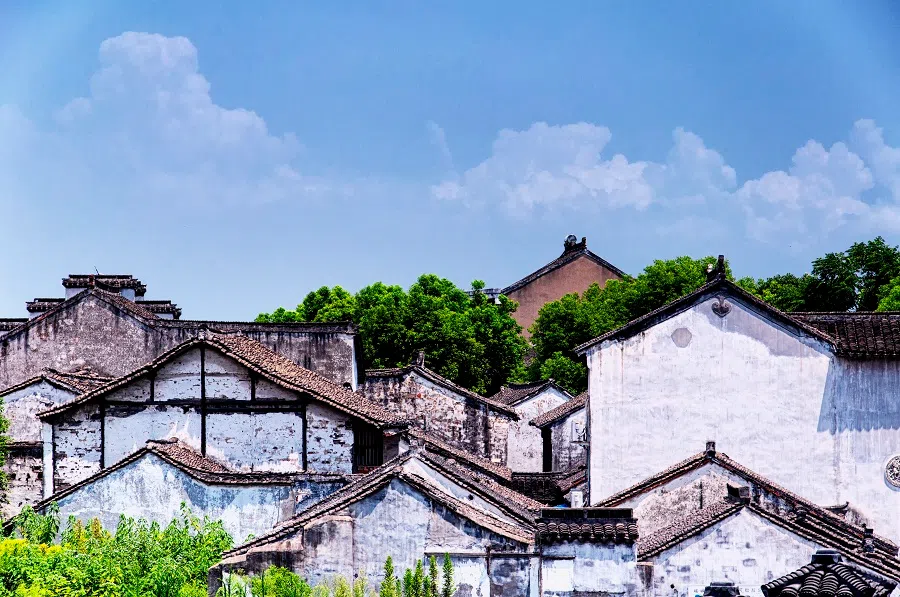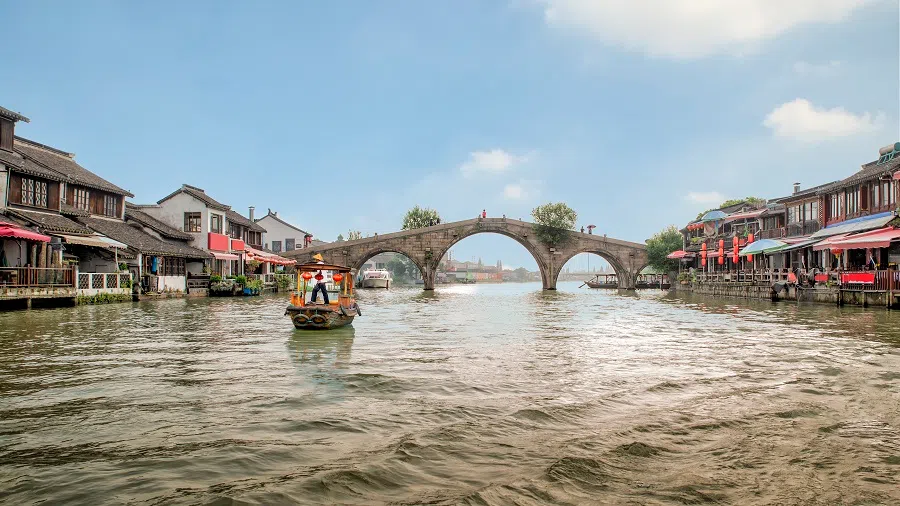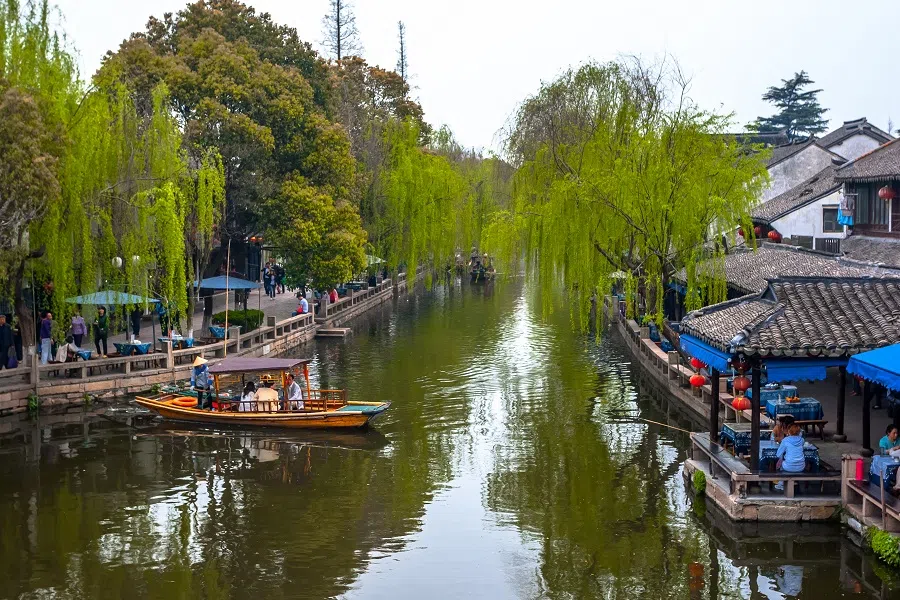Water towns of Jiangnan: An architectural perspective [Eye on JiangZheHu series]
Architecture professor Ho Puay Peng points out the unique charm of water towns in Jiangsu, Zhejiang and Shanghai — a testament to centuries of creative endeavours as many an artist or writer strolled past their waterways, seeking inspiration.

The rich fertile land in Jiangnan (south of the Yangtze River, or Changjiang) between Shanghai and Nanjing is covered with tens of thousands of waterways, producing a unique geography. However, the most significant aspect of this region is the development of a magnificent cultural landscape throughout the millennia of human occupation. The network of waterways allows for the ease of transportation and encourages thriving trading activities. As such, particularly in the Ming and Qing dynasties, many water towns were established serving as agricultural, light industry and trading hubs.
The shape of water, the shape of life
The landscape of Jiangnan region is crisscrossed with rivers, waterways, the great canal, ponds and lakes. Water is the way of life, the artery of economy and the organiser of the living environment. Shops, houses, ancestral halls, temples, study halls and other buildings are all constructed along the waterways, one building joined to another, each having a small frontage to the water and a long courtyard building behind the facade. The shopfronts are usually set back from the water’s edge and a long and covered arcade/corridors would allow a better protection of the shopping activities in rain or strong sunlight. Sometimes a continual bench would be provided along the arcade, making it the ideal space to hang out for community cohesion.

Likewise, public buildings are also usually set back from the water affording urban spaces for rituals and socialising. The two sides of the waterways are connected at certain locations with wooden or stone bridges, which serve as convenient places for hawkers and casual meetings. Larger waterways are used for transportation and steps are carved on the side of the canals for getting up and down to the boats. Narrower waterways are ideal for drawing water for cooking and washing.
Wooden members of the buildings are usually beautifully carved with literary motifs and auspicious patterns. Trees, particularly willows, are planted wherever spaces are available.
Where scholars and the literati dwelled
In most towns and villages, the flow of water is regulated in one direction; water for cooking and consumption will be taken from upstream and water for washing food stuff and clothes from downstream. The architecture follows the Jiangnan tradition of white-washed brick walls and grey clay roof tiles. Wooden members of the buildings are usually beautifully carved with literary motifs and auspicious patterns. Trees, particularly willows, are planted wherever spaces are available.
... houses were constructed in a truly luxurious fashion, not in terms of gaudy colours as the expressions of wealth, but exquisite decorations with the finest building materials to demonstrate the quiet and elegant taste in life.

With the wealth accumulated from the business, families and clans provided resources and encouragement for clan and family members to study for imperial examinations. Students from Jiangnan were most successful in imperial examinations since the Song dynasty, and the region produced the highest number of high officials serving the imperial courts for close to 1,000 years. As such, many literati, artists, philosophers, together with retired officials who had returned to their hometowns, were active in the many villages, towns and cities in the region. The humanistic and cultural layers added to the physical spaces of the water towns must have created a rich layer of ambience and meaning to the landscape of the water towns.
Quiet and elegant tastes
Due to the riches of the Jiangnan region, houses were constructed in a truly luxurious fashion, not in terms of gaudy colours as the expressions of wealth, but exquisite decorations with the finest building materials to demonstrate the quiet and elegant taste in life. The same aesthetics permeate the literary works, calligraphy, painting, operas, tea, food and other cultural pursuits. Many famous literati lived and actively engaged in cultural production and academic study in the region, leaving their marks for later inhabitants and contemporary tourists to contemplate. The layering of architecture, water, people past and present, poetry and paintings engage all our senses and imaginations. In this multisensory world of Jiangnan water towns, one can be lost in time and space, just be immersed in the elegance of the physical and mental states.

Some of the best of the water villages and towns include Zhujiajiao (朱家角) in the Qingpu district of Shanghai; Zhouzhuang (周庄) in Kunshan near Suzhou, Jiangsu province; Lùzhi (甪直) in Wuzhong district, Suzhou; Wuzhen (乌镇) in Tongxiang city, Zhejiang province; and Shaoxing (绍兴) located midway between Hangzhou and Ningbo in Zhejiang province, and many others. These are living and functioning communities, but some are overwhelmed by coach loads of tourists. The best time to visit these places would be early morning or late evening.
... echo the poem of Shi Jian (史鉴 1434-96) who describes how he stay in a boat by a bridge in Wuzhen, bright moon shined in the air and water seem to have an unfathomed depth.
Landscapes of poetry
Wuzhen township is located at the border between Jiangsu and Zhejiang provinces, near Lake Tai. Standing at the crossroads between the two provinces, the township had always been very busy in commerce. More than 100 bridges were recorded at a certain point in history. Today, tens of bridges connect different parts of the township along arcaded shops. Everywhere you look in the town, the pictorial compositions of grey roof, white-washed walls, wooden windows and posts, stone paving and bridges, with occasional green willows swaying in the wind, would echo the poem of Shi Jian (史鉴 1434-96) who describes how he stay in a boat by a bridge in Wuzhen, bright moon shined in the air and water seem to have an unfathomed depth.
In most of these towns and villages, one has to slow the pace of movement through the streets, over the bridges, negotiating the narrow lanes and savouring every scene that one is confronted with.

Smaller than Wuzhen, the small town of Lùzhi was the birthplace of Wang Tao, the modern pioneer in education. The most significant building of the town is Baosheng monastery (保圣寺), dating from 1,500 years ago. The main hall still contains many rare arhats sculpted during the Song dynasty, claimed by great writer Lu Xun (鲁迅 1881-1936) as the most exquisite sculpture in China. Speaking of Lu Xun, his hometown Shaoxing, featured prominently in his essays and novels.
Many places are so well described that they must have imprinted in visitor’s mind while sampling the yellow wine in Xianheng wine shop (咸亨酒店), or the large mansion and Song dynasty garden of the Shen family. In most of these towns and villages, one has to slow the pace of movement through the streets, over the bridges, negotiating the narrow lanes and savouring every scene that one is confronted with. Everywhere one turns, every scene is a snapshot of a picture-perfect impression of Jiangnan water towns. While buildings are grey and white, the jade colour of the water, the azure sky and bright colours of the flowers are all described by poets down the century. Even then, no word is adequate to describe the physical, visual and mental experience of these towns and villages.





